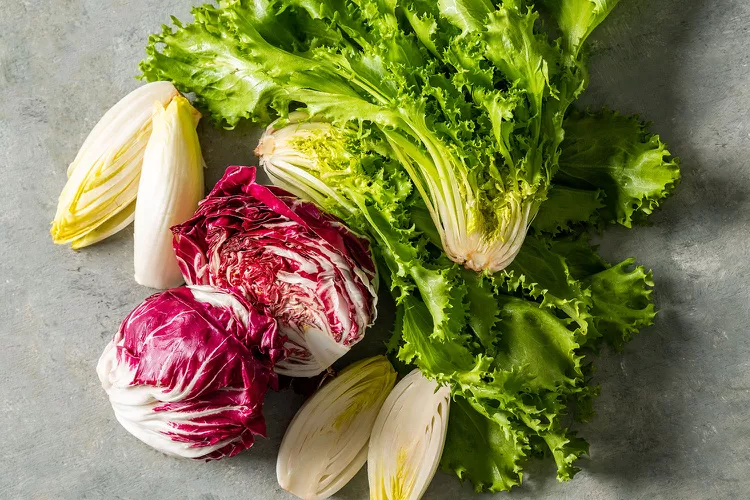
Description
Chicory grows to a height of one to one and a half meters on a stiff, branched, hairy stem and a long, meaty taproot. Its serrated, lobed leaves are borne around the base of the plant and resemble dandelion leaves in wild chicory.
Chicory has a rough, grooved, and somewhat hairy stem when it is in flower. The leaves are lanceolate, stalked, unlobed, and vary in length from 7.5 to 32 centimeters (with the smallest being towards the top) in width from 2 to 8 centimeters.
Habitat
Although it is not native to the United States, the chicory plant (Cichorium intybus) has established itself there.
Uses
Chicory roots have been used traditionally to treat moderate digestive issues, including feelings of fullness in the abdomen, gas, and poor digestion, as well as temporary appetite loss.

Varieties
There are various varieties of chicory; two popular varieties for gardens are radicchio and witloof. Grown for its roots, witloof is compelled to produce a tight, white set of leaves in the winter. The purpose of growing radicchio is for its foliage; some varieties yield loose leaves, while others have tight heads. Adding variety to your plants adds interest to salads and other meals. Seed catalogs offer several good types for purchase. The witloof varieties Daliva, Flash, and Zoom are suitable. Giulio, Firebird, Rossa di Treviso, and Rossa di Verona are good radicchio cultivars. For specific types, check seed catalogs or your local garden center.
Plant Care
- Soil
For optimum growth, chicory likes rich, well-drained soils that are rich in organic matter. As long as the soils in Utah are fertile and well-drained, they can be used to produce chicory.
- Temperature
You may grow chicory from seed or from transplants. Temperatures above 80ºF inhibit seed germination, while 65–70ºF is ideal for seed germination.
- Water
Water chicory often, applying 1-2 inches per week, to keep the soil consistently moist. Temperature and soil type both affect how much water is needed. Adding organic mulch around the plant aids in weed control and soil moisture conservation. During growth, drought stress will result in delayed leaf development and the development of bitter flavors.
- Fertilization
Four weeks after transplanting or thinning, apply 1/4 cup of a nitrogen-based fertilizer (21-0-0) per ten feet of row. Irrigate the fertilizer into the soil by placing it to the side of the plants. Refrain from adding more nitrogen after heads start to form.
Table





